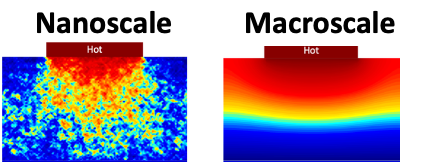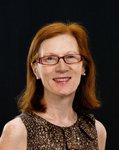High harmonic quantum light sources provide an exquisite ability to harness and control short wavelength light, with unprecedented control over the spectral, temporal, polarization and orbital angular momentum of the emitted waveforms. These represent the most-complex coherent electromagnetic fields ever created, controlled on sub-Å spatial scales and sub-attosecond temporal scales, from the UV to the keV photon energy region. These advances are providing powerful new tools for near-perfect x-ray imaging, for coherently manipulating quantum materials using light, and for designing more efficient nanoscale devices.
This talk will also discuss how ultrafast, coherent extreme ultraviolet (EUV) sources uncovered surprising new behavior in 2D, magnetic and nanostructured systems. Counterintuitively we found that the thermal dissipation efficiency increases as nanoscale heat sources are packed more closely together. Combined with advanced theory, this new understanding can help with better thermal management in nano- and quantum technologies, including the development of advanced nanoelectronics and efficient thermoelectric devices.
- M. Tanksalvala et al., “Nondestructive, high-resolution, chemically specific 3D nanostructure characterization using phase-sensitive EUV imaging reflectometry,” Science Advances, 7(5) eabd9667 (2021). DOI:
- H. Honavar et al., “Directional thermal channeling: A new phenomenon triggered by tight packing of heat sources”, PNAS 118 (40) e2109056118 (2021).
- P. Tengdin et al., “Direct light-induced spin transfer between different elements in a spintronic Heusler material via femtosecond laser excitation,” Science Advances 6, eaaz1100 (2020). DOI: 10.1126/sciadv.aaz1100
Bio:
Margaret is a Fellow of JILA and a Distinguished Professor at the University of Colorado. She runs a joint, multi-disciplinary, research group with her husband, Prof. Henry Kapteyn. She received her B.S and M.S. degrees from University College Cork, Ireland, and her Ph.D. degree from UC Berkeley. Margaret, with her group and collaborators, uses coherent beams of laser, EUV and x-ray light to capture and manipulate the structure and interactions in materials at the nanoscale. She is a Fellow of the American Physical Society, and the AAAS, and a member of the National Academy of Sciences and the American Philosophical Society. In 2021, she and Kapteyn shared the Benjamin Franklin Medal in Physics. Margaret is the Director of the National Science Foundation STROBE Center, where a consortium of 6 universities are building the microscopes of tomorrow.


